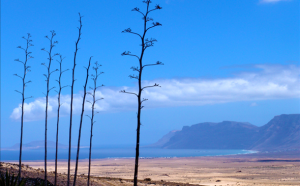Didgeridoo making with agave flowers from the island
I use agave flowers to make didgeridoos. The agave plant, although not a native plant, grows all around the island, like these you can see from Kalindi Rural House, with a beautiful view of Famara beach.
The process is laborious but simple. It consists bassically in choosing the flower, cutting, dividing in two pieces, emptying, sealing the inside, joining the two pieces again, sanding the outside, painting (if you feel like) and finally varnishing. You have a picture of different flowers in process on the left, and an almost finished didgeridoo on the right.
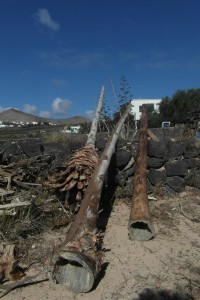 |
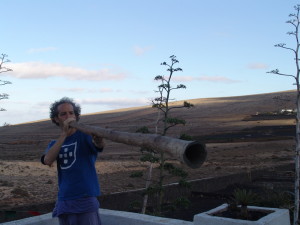 |
And you can listen to it here
The flower you choose for your didgeridoo needs to be dry. This is important because should you divide it when still green then the wood will deform and both pieces won’t glue properly. At the same time, when using a dead flower we’ll be respectful with nature and we’ll give another use to a flower which already fulfilled its being in life.
A dead agave flower doesn’t need to be on the floor. To be sure about which flowers we can use, choose one with a grey color and not many cracks. You cut eat wherever you like (sometimes you can make two or more didgeridoos from just one plant) and then you divide it in two with a knife and a wood hammer, with short hits. Then we empty the insides with a knife or a gouge. It’s better if the inside is thicker near the mouth and thinner on the bell.
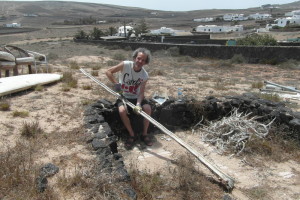 |
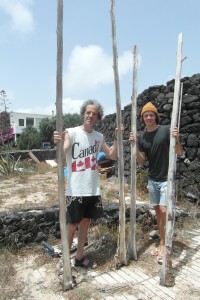 |
We seal both insides with a lot of white glue,
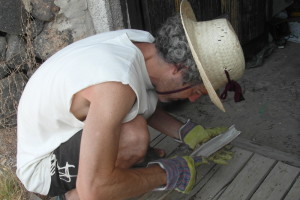 |
and last we glue the sides and join them strongly for 24 hours (in this case we used some bicicle tires we cut), painting and varnishing afterwards.
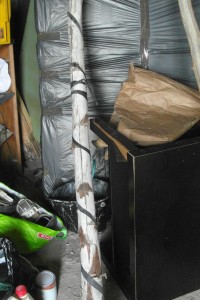 |
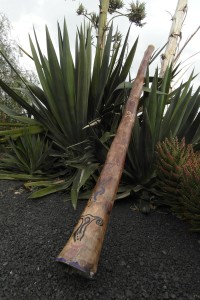 |
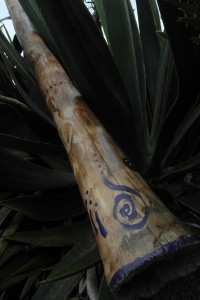 |
Sometimes the mouth of the plant is the right fit to play. In case it is too big you add a mouthpiece made from bee wax.
Enjoy your didge!!!

